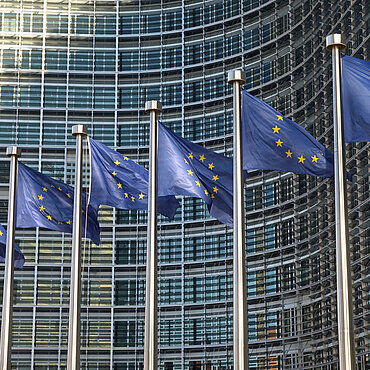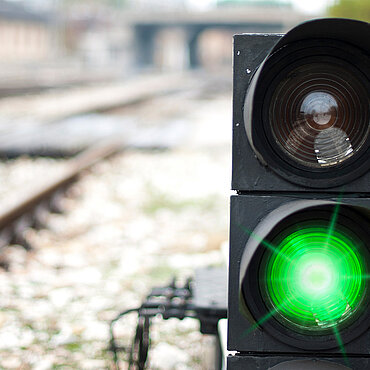One less MONOPOLY – the trademark use requirement and repeat registration
Trade marks have to be used, either by their owners or by a licensee. Otherwise they "lapse", i.e. cannot be enforced against third parties and can be cancelled upon request. However, there is a grace period of 5 years. What if, instead of using a trademark, a new one were to be registered? - In a judgment of 21 April, the Court of Justice of the European Union (CJEU) established the conditions subject to which such repeat trademark registration may be cancelled on the grounds of "bad faith" (judgment of 21 April 2021, T-663/19, not final and absolute).
The details are as follows:
An EU trademark will be declared invalid upon request if the applicant was acting in bad faith when it filed the application for the trademark, Article 59(1)(b) EUTMR. But is an applicant deemed to be acting in a bad faith if it files an application for a trademark essentially with the intention of using its grace period for use in a particular case instead of having to prove use of an earlier mark?
This question, which is very important in practice, was raised in the proceedings concerning an application for cancellation of the EU trademark no. 9071961 "MONOPOLY" registered by HASBRO Inc. for goods in classes 9, 16, 28 and 41 and others. The game is well-known. However, it has little to do with some of the goods and services for which this new trademark claimed protection – including all kinds of apparatus, various pieces of software, paper goods, television programmes and sporting activities. At the time the application was filed, HASBRO Inc. was already the owner of a number of other word marks for the designation "MONOPOLY" in these classes and for goods and services for which the new application also claimed protection. So the question may have arisen as to whether, in view of the fact that the earlier trademarks may be ripe for cancellation, it might not make sense to simply register a new one in order to achieve trademark protection in the relevant fields without having to prove use.
Another company smelled a rat and objected to the recent registration, arguing that it was a "repeat mark". It pleaded that the trademark "MONOPOLY" had only been applied for to avoid having to prove use of the earlier trademarks in the event of the trademark being challenged (legal action, opposition) as it would have to do in the event of an application for cancellation being filed against the trademark on the grounds that it had lapsed.
The European courts – and the legal situation in Germany is not significantly different – had already commented on this: In the Pelican judgment, T-136/11 of 13 December 2012, the court ruled that a repeat mark could constitute an application "in bad faith" but did not reach such finding in the case in question because the applicant primarily wanted to modernise its trademark. The mere fact that a trademark has been registered before does not automatically mean that a new one, i.e. a repeat mark, is being applied for in bad faith. - In the present case, the question was raised in a slightly different context. The applicant, HASBRO Inc., admitted that the new trademark had essentially been filed "to simplify administration" and owing to the costs of proving that earlier trademarks, some of which are identical, are being used. However, it defended its repeat application with various arguments: first, it said that registering a repeat mark so as not to have to provide proof of use was common practice: everyone did this. The Office would be swamped with applications for cancellation if it were found that an applicant was acting in bad faith when it filed its new application. Second, the new application for goods and services was not identical to the earlier one and was also only submitted shortly after the first application, i.e. not shortly before the end of the grace period. The Office said that, firstly, there were therefore also objective reasons for the new application having to do with the development of the market, and secondly this did not result in the grace periods being doubled. After all, the repeat mark did not do any harm.
The Board of Appeal of the EUIPO had ordered the mark to be cancelled. The court confirmed this decision. It said that although the fact of a trademark – even an unused one – being registered again could not be considered to be action taken in bad faith in and of itself within the meaning of Article 59 (1) (b) EUTMR, it was different if the main intention was not to use a sign already registered for certain goods or services as a trademark or even not to have to prove use. The protection of trademarks, precisely because it gives the beneficiary an exclusive right and therefore a resulting right to prohibit others from using it, requires use of the mark after a grace period. If the grace period were "artificially" extended, i.e. the requirement of use were circumvented, the applicant was considered to be acting in bad faith. The fact that everyone allegedly did this does not change this situation; nor did the fact that the new application only partly overlaps with the earlier trademarks and that the application had not only been filed just before expiry of the applicable grace period.
The judgment could prove to be of considerable practical importance. In one respect HASBRO Inc., the unsuccessful party in the legal proceedings, is right: many companies do this – not all, but many. Registering a trademark is cheaper and easier than using it for a lengthy period of time in a manner which allows the rights to be maintained. It makes sense to apply for a wide range of goods and services when applying for a mark, i.e. to include goods and services for which use is only possible but not certain. This is because the costs are relatively low and because subsequently it is only possible to restrict the mark but not extend it. It is not uncommon – and even for good reasons – for trademarks to be registered early, even before it is clear what exactly will happen. Otherwise someone else will do it. Sooner or later, more or less unexpectedly, it then turns out that the trademark has not been used nor will be used in the foreseeable future. Instead of investing a lot of money in the use of the trademark in markets that may become relevant at some point in the future – for example, the "INTEL" trademark has been registered with the EUIPO since 2001 for mixing devices for eggs as well as fruit and vegetable peelers, among others – it is tempting to simply register a new one for a relatively small investment. Although this does not save the earlier, unused mark, it does make it possible to take action against third-party marks without having to prove use as would be necessary based on the earlier mark. Often in such cases, even at the time of application, there will be no intention to use it, but the applicant will also be aware that this is difficult to prove. However, this is not what the exclusive right to the trademark is intended for. The protection of the trademark exists for the sake of its use, and the right to prohibit others from using means of communication can only be justified in this way. Those who want to enforce their trademark against third parties after expiry of the grace period need (and this is the message the CJEU is trying to get across) not just a new registration but an additional, acceptable argument compatible with the purposes of trademark protection. Such arguments exist, but they are not obvious, and there is a fine line between legitimate and less legitimate intentions. It may be a matter of registering variations of the trademark already registered, or it may be the case that the originally planned change to or expansion of the range has taken longer than planned, but now is actually taking place – there is nothing to stop someone establishing a trademark in the market even long after expiry of the grace period and then registering it again. It can therefore be argued that the earlier trademark simply lapsed, which it did anyway, and that the new one may be at risk due to rights of third parties having arisen in the meantime, so it is being registered again, but not in bad faith. Anyone affected by a trademark not being used may wait and take advantage of the right time for an application for cancellation and register the trademark as their own. If the repeat mark is not registered until after expiry of the grace period of the original, without it having been used, third parties can get "their foot in the door" by filing their own applications.
The "HASBRO" judgment is useful for applicants of repeat marks in that they can measure the strength of their arguments against it, as well as for those looking to challenge these arguments.
Dr Kristofer Bott, RA and specialist lawyer for intellectual property law
Frankfurt/M.

Subscribe to our GvW Newsletter here - and we will keep you informed about the latest legal developments!




